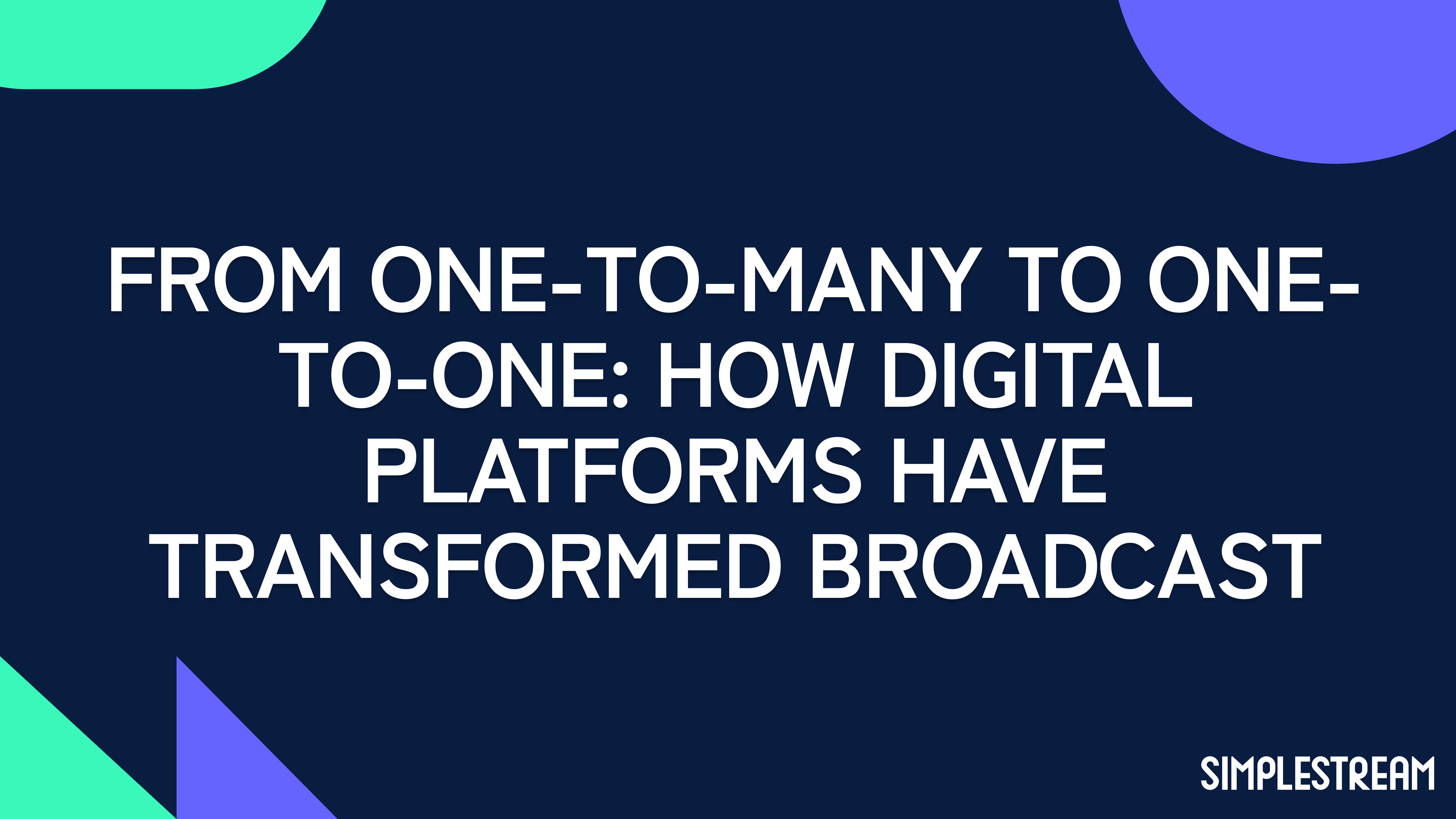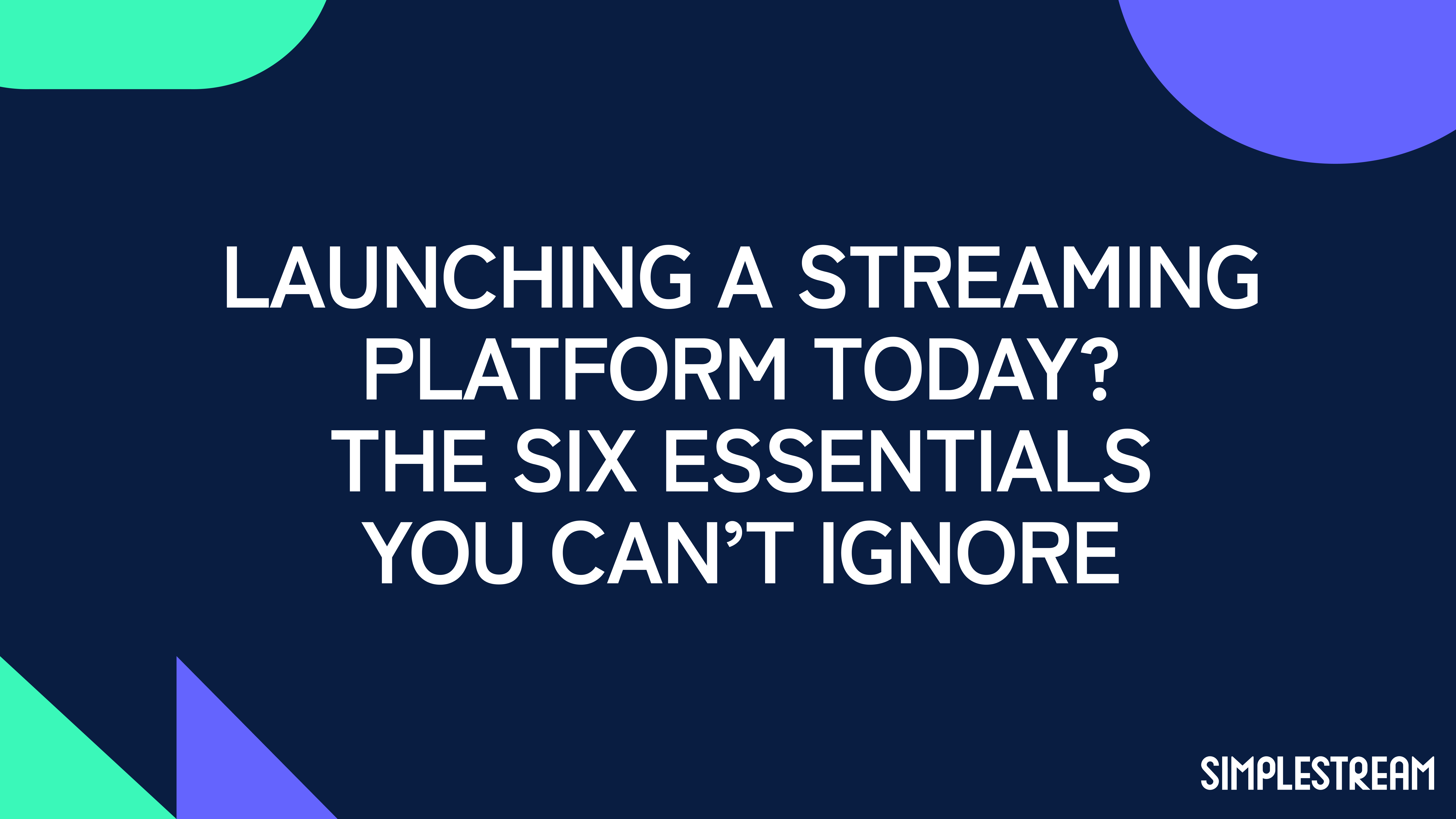Inside the future of sports broadcasting, with Dan Finch
What’s the future of broadcast in sport? Simplestream's own Dan Finch goes through present and future of sportscast.
The Covid-19 pandemic materialised as a disruptive earthquake. It quickly spread panic, and forced organisations of any size and kind – from international governing bodies to single clubs – to review their existing strategies to monetise their broadcast rights. The big change naturally accelerated a shift towards streaming and OTT, breaking with the traditional linear-only distribution of content. ‘Remove barriers, make it available everywhere, at any time’, seems to be the new mantra.
As 2021 is entering its final quarter, we can already look at this year – still under the umbrella of a world health emergency – as an extraordinary one. At least through the lens of sport. EURO 2020, the Olympics, and finally the Paralympics in Tokyo: amid obvious challenges, major sporting events previously postponed have grabbed fans’ attention worldwide.
What’s the future of broadcast in sport? We sat down with our very own Dan Finch, Co-founder and Chief Commercial Officer here at Simplestream. Read on, as we take the pulse of the industry and explore the future avenues of sport content consumption.
2021 has been so far a year of exciting sporting moments. Can you identify a new trend in terms of live sports consumption among fans?
“This year brought international sporting events back to physical venues for hundreds of thousands of fans, as well as to billions of screens across the globe. Despite there being empty stadiums, innovative live event production still managed to unite the sports fans. Undeniably, Covid-19 accelerated the shift towards different ways to consume content. The traditional value of sport is still in live consumption, yet today the near-live consumption of pre and post event bite-sized clips, across multiple devices, is skyrocketing. This enhanced fan engagement naturally carries a higher social currency valuation. Ultimately, the pandemic has accelerated streaming adoption, and the streamers have definitely leveled the playing field with more and more rights being snapped up by the likes of Amazon, especially in the niche sports sectors where everyone can now reach their fan base across any device”.
How did you see the pandemic changing the perspective of rights holders and broadcasters? Is linear broadcasting finally giving way to streaming services?
“Linear broadcasting is no longer enough to guarantee in-depth fan experiences. It helps people to discover new stories and follow events, yet rights owners and rights holders are now looking to complement their B2B offering by carving out their OTT rights so they can have a direct relationship with their real fans and, in many cases, for the first time. I see technology playing a key role in revolutionising habits and patterns: from ‘watch parties’ to more engaging interactions, operators are now looking at more sophisticated ways to bring users together, create a sense of community, and therefore increase the return on their investment. At Simplestream, we powered Channel 4’s OTT services for the Paralympics held in Tokyo this summer. It’s one of the most brilliant examples of how a broadcaster can expand audience reach by leveraging technology and providing a service that can support multiple live events simultaneously and create on-demand assets within minutes of broadcast, giving the end consumer total control of what they want to watch and on what device”.
How important is it today, for sports organisations, to partner with reliable tech companies in order to reach their audiences with a deeper offering in terms of experience and flexibility?
“I think it’s fair to say that sports organisations – unless we are talking about a handful of ‘giants’ in the space – have no interest nor the capabilities to become tech companies themselves. They are more interested in the data. While they are looking to improve their digital offering, they definitely need to partner with reliable tech companies to deliver on their consumer strategy. Today, organisations of any size in the sports space are eager to implement their solutions quickly, with the opportunity to scale their services, together with multiple business models such as AVOD, TVOD and SVOD to consider. A clear vision and the right tech partner can move the needle of their businesses, whether it’s governing bodies, federations, leagues or individual clubs.”
What are the ‘must-have’ elements for organisations going direct-to-consumer or broadcasters wanting to expand their digital offering?
“Going direct-to-consumer is really exciting, and we are seeing more and more sports entities taking this path recently. Fans demand more these days than just a linear delivery of a match for example. A good example can be found in F1, where a broadcaster like Sky has a compelling app to complement their linear rights deal for races. However, as a rights holder, F1 also provides an own and operated, immersive subscription service that can meet the fans’ needs, globally. The ability for a rights holder to geo-block on a ‘per region’ basis, with a flexible business model supporting AVOD, SVOD, TVOD systems allows for the maximum exploitation of rights on a per territory basis. Social media platforms lend themselves to different types of content duration so this is a must have requirement for any campaign planning. Finally, as end-users demand more, it’s integral to provide an offering that’s tailored to each user’s needs and that can come from a decent recommendations engine”.
You have a crystal ball and can see what the future holds for us. What is sports broadcasting going to look like in five years?
“I guess our crystal balls are not reliable anymore, after what our predictions were back in 2019 before the pandemic. Joking aside, today the convergence between linear and digital is more pronounced than ever. If social media revolutionised the way we communicate, OTT has changed – forever – the way content is distributed and can be accessed. The scenario of the near future is one of unprecedented amounts of content, aggregated under the roof of not just big distribution platforms but for the content owner also - I can see them aggregating all of the social media posts in one app is where I see it heading. What’s certain is that fans will need to be put under the spotlight, as if they were the main actors, as big as their heroes playing the actual game. And technology will need to be there to support complex architectures, in a sustainable, simplified way.


